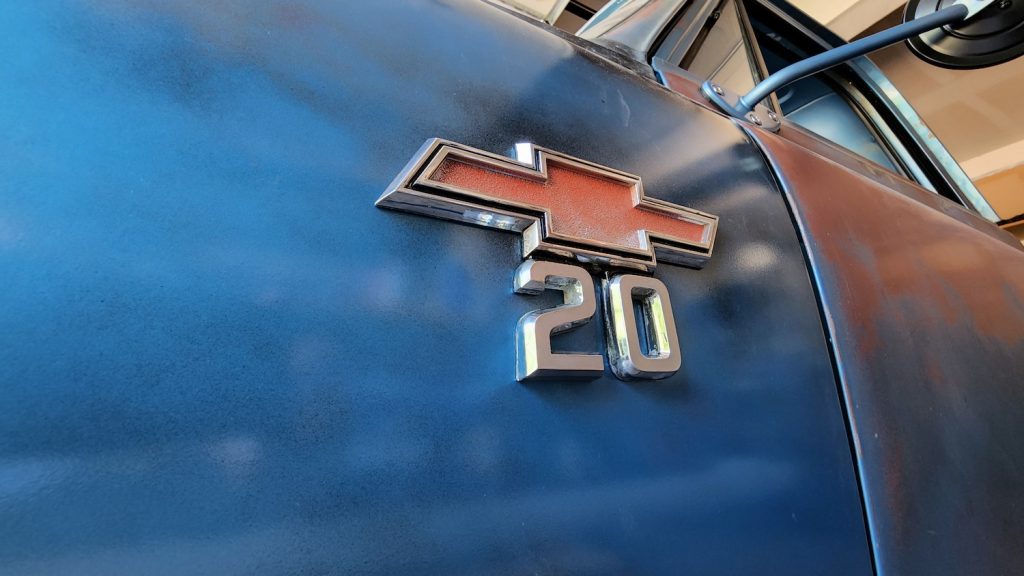I’ve been thinking a lot about originality this week, at least as it pertains to collector cars.
For the past several years, cars that were untouched seemed to be the gold standard in the marketplace — and it didn’t really matter what kind of car you were looking at, either. Head to head, from Alfa Giulias to Lincoln Continentals, given any two similar available models of equal condition, the more original car would typically be the more expensive of the two. The market was pretty well defined, thanks to years of barn find mania and Bloomington Gold-style reverence for what was factory-correct in any given classic car. “Untouched” became a powerful descriptor.
I wasn’t immune, either. When I went to source my newest project — a ’67 Chevrolet C20 truck — back in 2020, I drove hours out into the desert to a wrecking yard filled with rust-free hulks. Even though my plans called for a complete customization of every last component, to include shortening a bed and installing a modern crate engine, I bought the most original truck I could find.
And then 2021 and 2022 came along and surprised me. Customs gained a lot of ground in some segments of the market. In some instances, original car values dropped below those of customized versions. It felt, at least at the time, like a sea change.
I wrote about a BMW 3.0 CS at RM Sotheby’s 2021 sale in Monterey in Linkage #005 — a car that had been fitted with a stroker crank, an M5-spec manual, limited slip out of an E30 M3, custom brakes and suspension and more. “Granted, a BMW like this is going to provide a different experience than a stock 3.0 CS,” I wrote. “But if you consider use to be the point of ownership, something like this makes sense.” The big news here was not that it had been customized — hot rodders have been doing that stuff for decades. The newsworthy part here was that It sold for a stout $201k in a market that usually topped out around $60k. And it wasn’t the only non-stock car to do well in Monterey. Or in Scottsdale a few months later, for that matter.

To me, it seemed like the market had finally given a green light to owners to do what they wanted. Life’s short, right? The right modifications were no longer a detriment — but they had to be done tastefully and done right.
But the rise in custom values means that, now more than ever, original cars will be leaving the scene, and those original cars are a non-renewable resource.
In today’s world, where originality still has pull and customization is coming on strong, we’re in a weird spot where certain mid-market or entry-level cars that are currently original may not stay that way for long — but the changes made may not be all that obvious at first.
That will send ripples into the future marketplace as the Instagram generation buys into a collector car world that’s filled with both barn finds and faux patina. Points and electronic ignition conversions. Quick-turn steering boxes that bolt up to stock frames. Customization can be mild, but it’s a slippery slope. For anything below the blue-chip level, how will strict originality be valued in the future?
I recognize my own bias here, as I’m knee-deep in a modernization project with my C20 (now C10). But I can’t decide if even mild modern updates are a net positive or net negative to the scope of the collector car experience. On the one hand, that original look and feel that a good, stock, 50-year-old car has managed to maintain should be treasured — but on the other, the custom world is a young and vibrant one, and if mild upgrades make the experience better and a car more frequently used, what’s the problem?
Where would that C20 have ended up had I not dragged it home for a mechanical re-think?
For all these reasons, as we roll into Monterey, I’ll be watching values of customized collector cars very closely.
And in the meantime, I’m going to save as many of those original truck parts as I can — even if I don’t use them.















More Stories
Cars to Watch in Arizona
A Look Inside SEMA 2024
The Future of Muscle